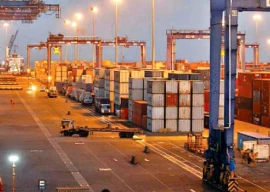
This has led to the search for alternatives like importing LNG – which is expensive – or adding LPG-air mix to the natural gas system, also an expensive solution.
The Tight Gas (Exploration & Production) Policy was promulgated in May 2011 by the Ministry of Petroleum and Natural Resources and subsequently approved by the Council of Common Interests (CCI).
One of the objectives of the policy is to attract foreign direct investment, given the high cost of exploration and production. As Tight gas exploration is more difficult and the required technology is more expensive, companies don’t typically go in for exploration until given attractive incentives.
Gas price incentives are an important pre-requisite towards promoting a Tight gas investment recovery process. To encourage investment, 40% premium will be given over the respective zonal price of the Petroleum Policy 2009. And apart from this, in order to encourage the companies to fast track development and production of Tight gas, an additional 10% premium will be given for those volumes that are brought into production within two years of announcement of this policy.’
Apart from this the government is also aggressively pursuing the exploration and extraction of Shale gas but a policy for this is yet to be announced.
What is Tight gas?
Tight gas refers to natural gas reservoirs locked in extraordinarily impermeable, hard rock, making the underground formation extremely “tight.” Tight gas is usually trapped in sandstone or limestone formations that are atypically impermeable or nonporous. Tight gas is held in rock pores which are up to 20,000 times narrower than a human hair.
A conventional gas formation can be relatively easily drilled and extracted from the ground unassisted but Tight gas requires more effort to pull it from the ground because of the extremely tight formation in which it is located.
While conventional gas formations tend to be found in the younger Tertiary basins, Tight gas formations are much older, having been deposited some 248 million years ago. Over time, the rock formations have been compacted and have undergone cementation and re-crystallisation, which all reduce the level of permeability in the rock.
Shale Gas is a description for a field in which natural gas accumulation is locked in tiny bubble-like pockets within layered sedimentary rock such as shale. The situation can be best compared to tiny air pockets trapped in a loaf of bread as it bakes.
While Shale gas is trapped in rock, Tight gas describes natural gas that is dispersed within low-porosity silt or sand areas that create a tight-fitting environment for the gas.
Exploring and extracting Tight gas
This is the real challenge since the cost and effort involved in extracting Tight gas is quite different from conventional methods. But it has been commercially extracted in many parts of the world now and there are some tried and tested methods. Some of the proven technologies used in Tight Gas exploration are:
Directional drilling

Directional drilling means drilling wells at multiple angles, usually vertically and in some cases horizontally too, to better reach and produce gas reserves. From a single location, various wells can be drilled at myriad angles, tapping reserves miles away and more than a mile below the surface.
Hydraulic fracturing

Hydraulic fracturing is the practice of injecting a well with large amounts of frac fluids under high pressure in order to break the rocks. Small channels are opened up as a result to release the encapsulated gas and allow it to flow into the wellbore.
Reserves in Pakistan
While there is no proven figure available, it is estimated from various independent sources that Pakistan has estimated total Tight Gas reserves in the range of 24 to 40 TCF, which makes them larger than the existing natural gas reserves.
Mari Gas Company Limited in Zarghun block, Polish Oil and Gas Company (PGNiG) in Kirthar block and OMV in Miano and Sawan blocks, have found Tight gas.
Tight gas reserves have also been identified in the existing development and production leases granted to various E&P companies operating in Pakistan. Main Tight gas regions identified are Kirthar Foldbelt located in Dadu, Sindh, Sulaiman Foldbelt (located in Balochistan), Potohar region in Punjab and offshore areas near Karachi.

What does the future hold?
The first ever Tight gas sales and purchase agreement was signed on November 13, 2012 in Islamabad for first production from a Tight gas reservoir in Pakistan from Kirthar Block in Dadu, Sindh. The Kirthar Block is jointly owned by Polish Oil and Gas Company (70%) and PPL (30%).
If exploration and extraction is on schedule, SSGC will receive 30mmcfd gas into its system through two Kirthar Block wells.
For the implementation of this project, SSGC has been awarded a contract of Rs235 million for the construction of 52-km pipeline from Kirthar Block’s Rehman Gas Field which will be integrated into SSGC’s system at Naing Valve Assembly through the Bhit Gas pipeline.

Apart from this, PPL in collaboration with ENI is set to start for the first time drilling of exploratory well in Sindh’s deep sea in 2014. In this regard, around seven exploratory wells, eight appraisal wells, and 19 development wells have been planned for discovering 150 billion cubic feet of Shale and Tight gas in Sindh in the next five years.
Published in The Express Tribune, January 28th, 2013.
Like Business on Facebook to stay informed and join in the conversation.
COMMENTS (5)
Comments are moderated and generally will be posted if they are on-topic and not abusive.
For more information, please see our Comments FAQ

1720097164-0/BeFunky-collage-(9)1720097164-0-165x106.webp)


1734567485-0/Untitled-design-(54)1734567485-0-165x106.webp)

1722065362-0/BeFunky-collage]-(56)1722065362-0-270x192.webp)










The price of natural gas in the US decreased from $8.5/MMBTU to under $3.00/MMBTU after the development of shale gas. Pakistan has 51TCF of shale gas in Sindh and KPK with a similar assessed but not estimated volume in Punjab. This gas should meet our needs for the next 30 years as a bridge fuel so it must be developed immediately. Thar should be strip mined with surface gasification plants at site to produce at least 2 BCFD of SNG from the first plant and then a similar plant should be built every five years to reach at least a production of 10 BCFD by 2030. Development of the CBM in Thar will interfere with coal production and must NOT be undertaken. Thar coal resources are equivalent to 3000 TCF of natural gas so the development of coal should be given priority. CBM is only produced from depleted coal fields which have already produced all the usable coal. The same applies to UCG.
The answer to fuel shortage is COAL .
a surprisingly nice explanation of fracking. as 123 eluded to, this technology is only in the US, even European countries do not have access to some of this technology. so getting it to pakistan seems like a pipe dream since the current investment climate makes it difficult to attract us companies
Keep on dreaming! Lets get our act together -- I mean the politicians. Sindh Government signed an agreement with a Canadian company in 2007 for exploration and production of CBM ( Coal Bed Methane) -- gas trapped in coal. US Geological Survey estimates at least 20 TCF of CBM reserves in Thar coal fields. If this agreement was honored then probably we would not be facing this massive gas shortage. I strongly believe that no major investment is coming from US and associates. WE MAY HAVE ALL THE NATURAL RESOURCES BUT MONEY IS ESSENTIAL TO UTILIZE THEM. GOD BLESS PAKISTAN!
The technology to drill shall gas only avalaible to Us I dont know how Pakistan is going to get this gas as described in article that Pakistan government want to explore this gas.